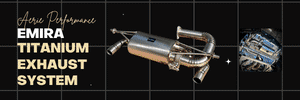Coarseness and vibration is what I was referring to as balancing. The inline 6 has the advantage of all the movement of the pistons being vertical in the same direction along the crankshaft. The cam and valves are also sitting right inline on top of all this, so everything is balanced horizontally by being in a straight line along the same vertical plane. This makes for a stable and smooth running engine. It also has fewer parts and weighs less.
The V configurations have the opposite. The pistons on each side are violently moving up and down in opposite directions; the left side is pushing down to the right, and the right side is pushing down to the left. Plus you have two cams each with their own valve sets, hanging out at the top of the end of each side of the V. That's a recipe for a lot of jiggle, wiggle and vibration. The manufacturers use balancers to help compensate for some of that, combined with timing when each cylinder fires so there isn't too much motion at once in either direction. This helps to keep the side-to-side motion down to a minimum in the middle, and the rest is smoothed out with harmonic balancers at the crank. The downside is a lot of extra parts, weight, and things in motion; all of which adds to the overall vibration. The motor mounts help to eliminate the last part so you don't feel it in the car.
As for longevity, modern engines are so well built there probably isn't that much of a difference in longevity, depending of course on how the engine is used. High performance produces high stress and heat, and that can shorten the life of any engine. There are of course fewer parts on an inline 6 to break, so that is somewhat of an advantage.
Here's a good article on the differences between a supercharger and turbocharger:
Both turbochargers and superchargers cram extra air into an engine to increase power, and they each have their pros and cons.

www.motortrend.com
A supercharger and turbo both essentially do the same thing, except by different methods. They both force more air into the combustion chamber than the engine would normally pull in on its own. Fuel mixed with air produces the force when it explodes; the more air, the more powerful the explosion. A turbo produces its air from being spun up by the pressure of the exhaust from the engine. Since it's dependent on engine speed, this is why it takes some rpm for it to really start making a difference, and thus feels laggy; it doesn't kick in immediately. The advantage of the supercharger is it forces air immediately because it's not dependent on the exhaust pressure; it's driven separately. This makes it ideal for low speed power and throttle response. Turbos add a lot of power at higher rpms, but how useful that is depends on how and where you're driving your vehicle.
Sound.
There are a lot of factors involved in sound, both engine sound and exhaust sound. Because there are less moving parts, inline engines sound quieter and smoother than a V configuration. V engines are noisy mechanically.
As for exhaust sound, that depends on engine cylinder size (the bigger the bore, the boomier the noise), size and channeling of the exhaust ports, the tubing size, length and shape of the exhaust manifold, as well as the material it's made of, the type of catalytic convertor the manifold exits into, the diameter, bends and length of the exhaust pipes from the cat(s) to the resonator if there is one, the type of mufflers, and finally the exhaust tips. Bigger diameter pipes give a deeper, boomier sound. Smaller diameter pipes give a sharper, barkier sound. Cats, resonators and mufflers can change the tone from sharp to a softer-edged muffled tone, as well as being quieter. They also eliminate harshness in the tone. This makes cars nicer to live with, but the sound isn't as exciting. Louder isn't necessarily better. People make the mistake all the time of thinking that changing the factory exhaust to a 3rd party performance exhaust is going to make their car faster and sound great, then they find out they now have skull pounding resonance in the car. There's a science to a well-designed exhaust system, because it IS a system, not just bigger straight-through pipes.
Because V8's typically have large bore cylinders, they have that typical roaring boomy sound. A lot of fuel and air can be compressed in those large cylinders and that's why those engines are so powerful. The smaller the bore, the higher pitched the sound, which is why V12's have that sharp edged, ripping sound. The bores are smaller than a V8, but they make up for that power-wise, by having more cylinders. A V6 sits in the middle of that; smaller bores than a V8, but larger than a V12, so they have an exhaust sound that's a little deeper than a V12, but not as boomy as a V8. With a good, well-designed exhaust system, a V6 can sound really good. Not quite as sensuous as a V12, but more of an exotic sound than a V8, although a V8 can still sound quite good if the exhaust system is well-designed.
Depending on what Lotus has to cobble in there to meet emissions, the V6 is going to sound very good to really good. The latest clip shows the latest build sounding really good. If that latest clip is production spec, we've got a winner in the sound department. We haven't heard anything definitive about the i4 yet, so it's hard to say, but I expect it to have more of a boomy roar than the exotic rip of the V6. If you've heard a turbo 4, they all seem to have similar sound characteristics; the tone is softer edged with more of a roar than a bark.








